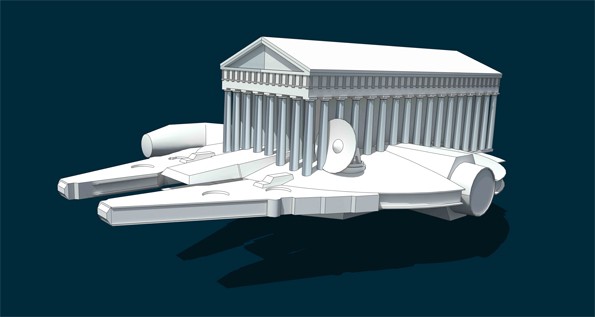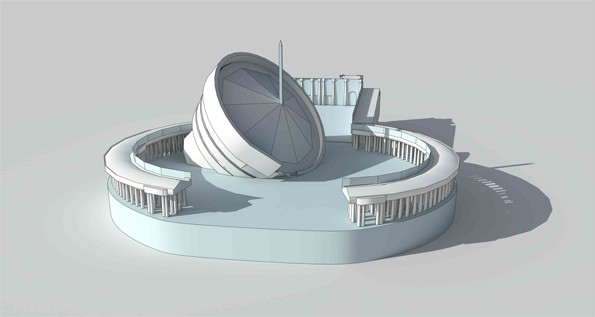Javier Fresneda
Thursday, 11 April 2013
Work from Future Studies.
“Looking at the works of Javier Fresneda, we see drawings; three-dimensional renderings, models; photographs;
sculptures, and web pages. What gives him the right to partake of so many different media? In my view, the
answer lies in his unconventional way of thinking, in which the medium is subordinate to the language. He
chooses the media depending on the idea, time, space, and context and is interested in utopian projections,
societies, absurdities of all kinds, physical and metaphysical worlds, experiment, loneliness, obscurity, the
unknown, culture against nature. (The list could go on.)
He deals with the absurdity and mystery of the world, and his works speak of the complexities of reality and art.
He does not simplify his work for the viewer, but demands maximum effort and attention. Fresneda’s attitude is
far from the populism of fashionable contemporary art, which strives to be instantly understood and consumed
for the sake of media attention and the market. I had the opportunity to see quite a few of his projects, and I
must admit that I changed my interpretation of each of them several times over. His works provoked me to the
extent that I kept on developing and elaborating my takes on them. They intrigued me, and I had a feeling that I
understood them, but not all the way through to the end. As in most good works of art, this task has to be
completed by the viewer.
Even when I read the short explanation of his works that he sent me, it seemed that, as though in some
intellectual quiz or wilderness survival competition, he deliberately complicated the reading for the viewer even
further so as to force him to use all his intelligence and imagination to solve the tasks. Like explorers in the near
and distant past who explored unknown places, Fresneda, too, explores the outermost limits of our imagination
and the projections our civilization is capable of. He tries to transpose us mentally to new spaces which we
haven’t visited yet, or to think up new constructions/combinations.
In his work MontañaMúltiple, we see a mountain consisting of 14 mountaineering routes to the highest
mountain peaks on Earth; in effect, he has created a new mountain. This mountain is imaginary and real at the
same time; what’s absurd is that a model of this mountain has been made which, at the same time, is a sculptural
exhibition artifact. Models are usually made for architectural projects and not for natural formations. Fresneda is
interested in extending the possibilities of our thinking to the outermost bounds of the phenomenal world,
where (as a matter of fact) we continue to travel primarily in our imagination; even in this century we are not
much further along in this respect than the civilizations whose architecture he merges with space ships in the
Future Studies series.
The works from this series project our viewpoint into the future, because we know that the Atomium sculpture
in Brussels and the Eiffel tower in Paris are still standing, although in his renderings we see them destroyed and
then remodeled and reused. Through this series of works, we understand that every present is also the past of a
future. Fresneda shifts us, the viewers, from our time and space into the future. It is known that if we want to
understand something better, we have to estrange the point of view and somehow try to step out of space and
time. Good art pulls the rug out from under the viewer, shaking the ground he stands on, from which things
looked well ordered and almost unchangeable. Javier has been doing well in unsettling our reality thus far.” – Miran Mohar
Translated by Jasna Hrastnik



